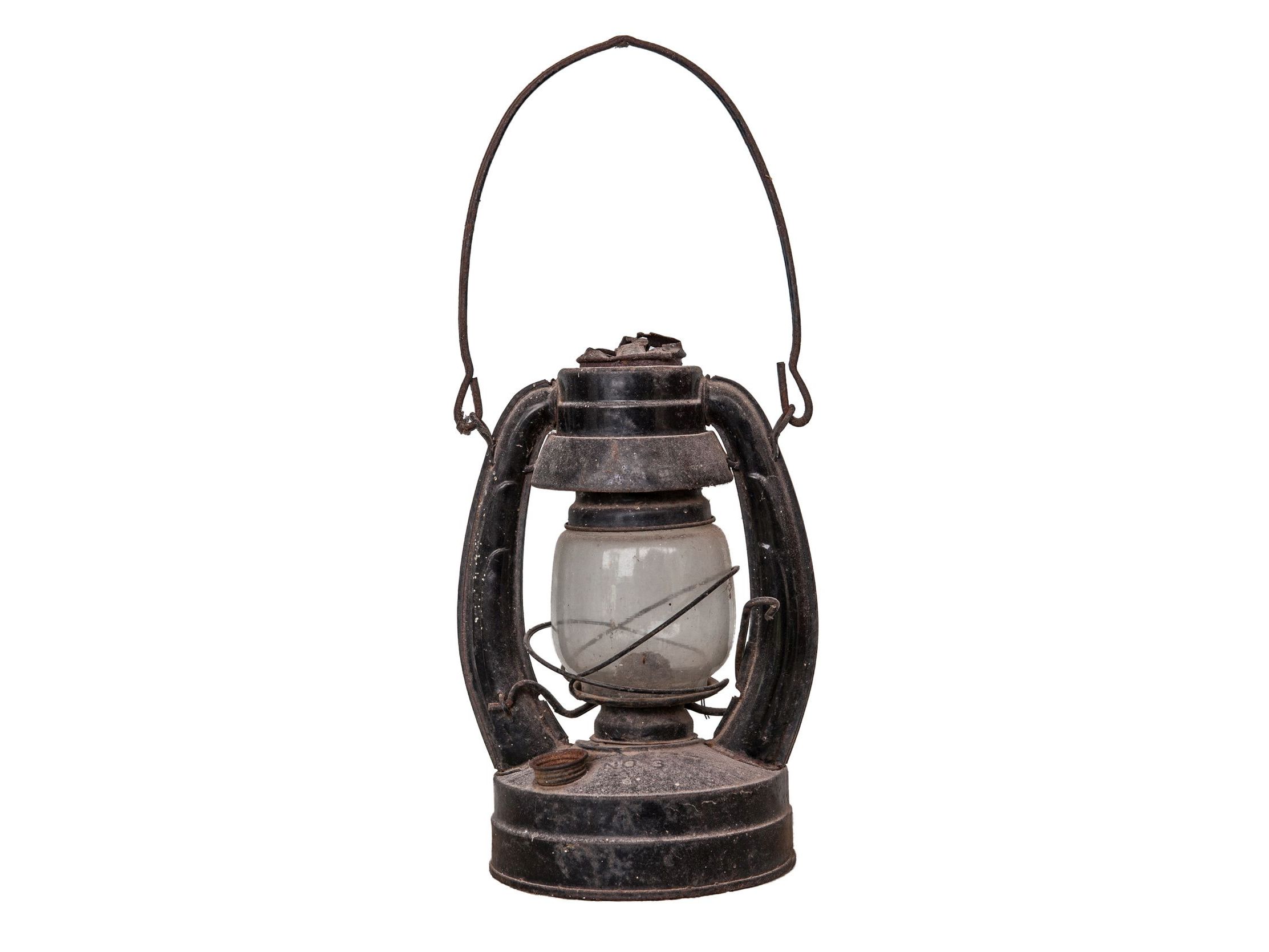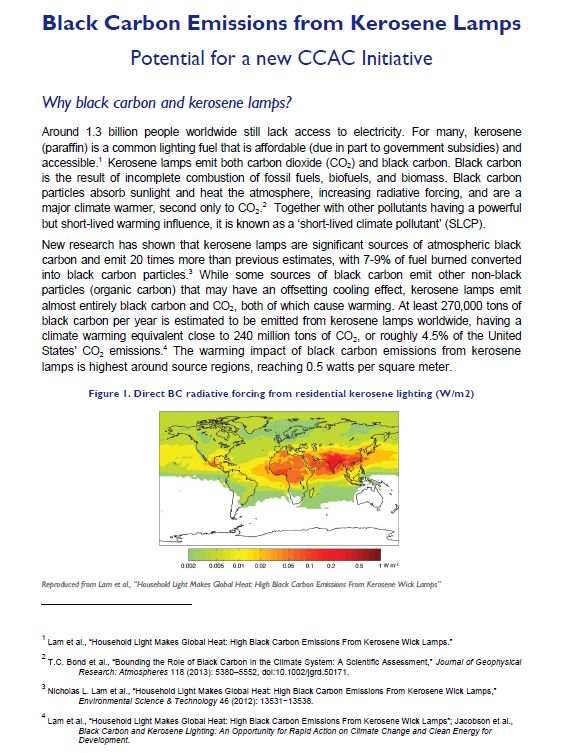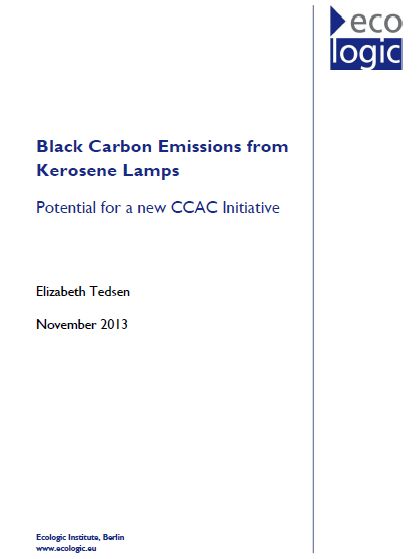Around 1.3 billion people worldwide still lack access to electricity. For many, kerosene (paraffin) is a common lighting fuel and kerosene lamp use is widespread in the developing world. Research has shown that these lamps emit significant amounts of black carbon, 20 times more than previously estimated. In this project, Ecologic Institute examines the current landscape of lighting efforts and initiatives, as well as market growth and development for modern, sustainable off-grid lighting alternatives.
Although kerosene lamps constitute a smaller overall source of black carbon than other major sources, such as diesel engines or industrial coal-burning, they are comparatively cheaper and easier to replace and viable alternative lighting sources already exist. Modern off-grid lighting alternatives, such as solar LED products, solar photovoltaic systems, and mini-grid, are generally safer and healthier than kerosene, and have brighter light, longer product lives, and lower lifecycle costs. In addition to the climate benefits of reducing black carbon, a potent short-lived climate pollutant, there are significant health and development co-benefits to be attained by replacing kerosene lamps with non-fossil fuel-based lighting alternatives.





